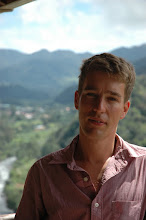Kathmandu And Not Bust
I've been a bit tardy with the blog of late as a number of readers have pointed out by e-mail. Life in Nepal has been a hectic round of activity, with all manner of new impressions and experiences mixing with the sadness of a whole round of goodbyes. Although this is halfway for me, the official Dragoman trip ended here on arrival in Kathmandu, so over the course of a week I found myself saying farewell to a whole host of old friends, new friends and ex-girlfriends. In many cases I think it will be farewell rather than goodbye, at least I hope so. Now there is just Graeme and I left to travel on to Delhi, and our leaders Claire and Riki who are stranded here battling with Nepalese bureaucracy in an attempt to get a permit to allow two parked up Drago trucks to depart the country for India.
Nepal is a remarkable country passing through a very troubled passage in its history. The first impression you get is of the extreme beauty of the landscape. Unlike Tibet, this is an intensely green and watered land. It also offers a more breathtaking view of the Himalaya, since the land literally rises from not much above sea level to the very roof of the World. Last week while trekking I walked through the deepest gorge in the World and could look up to either side at mountains rising 6000m above my head. In Tibet, the average height of the land is 5000m, so the mountains tend not to tower over you in quite the same way.
The people and culture are also markedly different. In fact there is a sizeable Tibetan community in Nepal, and trekking through Lower Mustang above the Himalayan rain belt you could kid yourself you were back in Tibet from the dusty, brown nature of the landscape and the wholly Tibetan communities you encounter inhabiting tiny hillside villages. Nonetheless, arriving in Kathmandu you are hit immediately by the bustle and noise of the Indian subcontinent, and the predominently Hindu rather than Buddhist feel of the culture. The Nepalese people look Indian in appearance and the influence of India is felt is a whole host of ways from a curry based cuisine to cows wandering into the middle of the roads. Kathmandu is also a city highly geared for Western tourism, which comes as rather a shock after most of the places we have passed through on this trip. The Thamel area in which we are staying is a mass of hotels, souvenir shops, restaurants serving Western food, all jumbled up with any number of hawkers and salesmen selling everything from rafting and terkking trips to bicycle rickshaw rides around the city's main sites. It's a cramped and atmospheric quarter of the old city, which is seductive in terms of its Western amenities and the ease with which one can meet fellow travellers, but it also builds in you the desire to escape to a more real Nepal.
We did get out during the first week here. Travelling around the Kathmandu Valley to visit a group of ancient Nepalese cities which have preserved remarkably intact central zones of temples and palaces, just as Kathmandu has done with its famous Durbar Square. Later the final remants of our group took a two-day white water rafting trip down the Tisuli River. I was a little apprehensive in advance about the idea of plunging headlong into 6ft raging waves in an inflatible raft, but the moment we went through the first rapid I became an addict. Aside from the adrenile rush of each soaking, the middle hills scenery was just spectacular. Nepal truly is the place to go rafting if you ever have the chance.


0 Comments:
Post a Comment
Subscribe to Post Comments [Atom]
<< Home